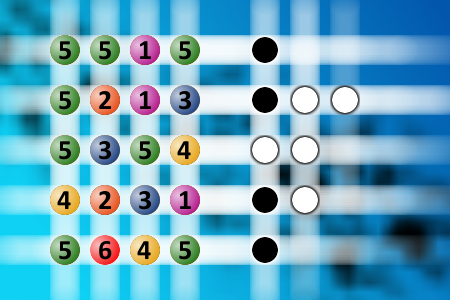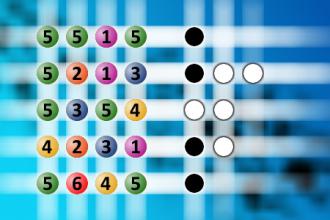What a winning combination?
The computer chose a secret code (sequence of 4 digits from 1 to 6). Your goal is to find that code. Black circles indicate the number of hits on the right spot. White circles indicate the number of hits on the wrong spot.Correct answers: 0
#brainteasers #mastermind

Cork Screw
Gary and Martin were standing at the urinals in a public lavatory, when Gary glanced over and noticed that Martin's penis was twisted like a corkscrew. "Wow," Gary said. "I've never seen one like that before."
"Like what?" Martin said.
"All twisted like a pig's tail," Gary said.
"Well, what's yours like?" Martin said.
"Straight, like normal," Gary said.
"I thought mine was normal until I saw yours," Martin said.
Gary finished what he was doing and started to give his old boy a shakedown prior to putting it back in his pants. "What did you do that for?" Martin said.
"Shaking off the excess drops," Gary said. "Like normal."
"&%$#@ !," Martin said. "And all these years I've been wringing it."

